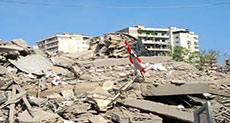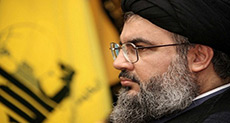Lebanon war failed to deal with Hizbullah short-range rockets
Source: Haaretz, 16-2-2007
By Amos Harel and Avi Issacharoff
One of the greatest failures during the second Lebanon war, a subject that has also occupied a great deal of time in the Winograd Committee`s probe of the war, is the fact that the "Israeli" Army did not put an end to the short range-rocket attacks against "Israel". An analysis of testimonies and investigation reports, some of which were also available to the committee, suggest that while the Air Force and the intelligence branches focused on Hizbullah`s arsenal of medium- and long-range rockets, dealing with Katyushas was neglected. The matter seems to have "fallen between the cracks" during the period preceding the war.
To a certain extent, the question of who is responsible for providing an "Israeli" antidote to this threat is still debated in the "Israeli". A senior defense source familiar with the issue told Haaretz that, "This is a matter of serious and long-term, system-wide negligence. There was a serious failure in dealing with short-range Katyushas. There is no other way of describing it."
Senior "Israeli" officers, including former chief of staff Dan Halutz, admitted recently on a number of occasions that the army failed in this task. The fact that Hizbullah fired close to 200 Katyushas on the final day of fighting, August 13, 2006, is testimony to this failure.
The medium-range Fajr missiles in the Hizbullah arsenal, and the longer range, Iranian-made Zilzal rockets, were under careful "Israeli" Army study since its withdrawal from southern Lebanon in May 2000. This careful preparation resulted in the success of what the IDF calls "the Fajr night," that same 34 minutes during the first night of the war during which the Air Force struck dozens of homes of Hizbullah activists where the rockets were hidden and eliminated that threat.
However, in retrospect it emerged that there was a real vacuum in the preparation for dealing with short-range rockets. The Air Force focused on medium- and long-range rockets, but Northern Command practically ignored the issue of short-range rockets. Moreover, after the war, some of the officers argued that the matter was not part of their area of responsibility.
"The result," defense sources say, "is that we went into this war ignoring an entire aspect [of the threat] - a genuine vacuum."
The gap in intelligence was not considered a pressing issue, even though war games carried out by the General Staff and Northern Command in previous years made it clear that the Air Force is unable to solve the problem posed by short-range Katyushas on its own.
The Katyusha failure became increasingly obvious as the war dragged on: Hizbullah continued launching rockets against communities in the Galilee and the Army was unable to cope. Due to a shortage in intelligence information, there were not enough Katyusha targets to attack. During the fighting, Air Force intelligence began dealing with some aspects of the problem, but no definitive results were ever achieved.
In addition to the intelligence problem, the chief of staff divided responsibility on a territorial basis: Northern Command got the area between the border and the Litani River, and the Air Force got everything north of the river.
Moreover, the chief of staff divided the area between the border and the Litani in two - separated by a yellow line - which stood for much of the war at a distance of 6-7 kilometers north of the border. Firing orders were as follows: From the border to the yellow line, the use of artillery and air power was the responsibility of Northern Command; from here on northward, it was in the hands of the Air Force.
In other words, the "Israeli" Army broke a cardinal rule and violated the overlap that exists between authority and responsibility. Northern Command was responsible for the fighting from the border onward to the Litani River, but in order to use helicopters and fighters in attacks in the area located between the yellow line and the Litani, it had to ask for authorization from the Air Force in Tel Aviv headquarters.
For its part, the Air Force considered its responsibility over the area between the yellow line and the Litani to be of secondary importance, having its hands full with the area north of the Litani. Moreover, intelligence information on that part of the war front was limited.
The following data will shed light on the serious significance of this problem: 69 percent of Katyusha rockets were identified as having been launched from an area north of the yellow line. And the vast majority of them were launched between the yellow line and the Litani. The area from which most of the Katyushas were launched was the area for which the Army had the least intelligence.
At General Staff deliberations held during the war, the awareness that the Katyusha problem was serious was only understood at a relatively late stage of the armed confrontation.
Testifying before the Winograd Committee, senior officers from Northern Command, including GOC Udi Adam, who resigned after the war, claimed that the General Staff had limited the means they had to deal with the rockets. General Staff severely restricted the ground operations during the war`s first two weeks.
At the General Staff they claimed that they pressed Northern Command to take control over the area north of the yellow line, but that its leadership delayed this move and showed unwillingness to assume responsibility there.




